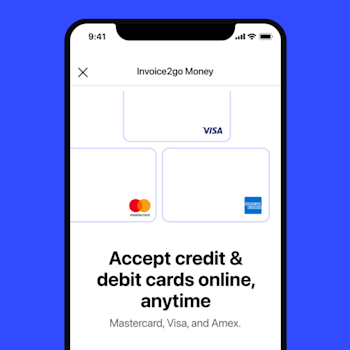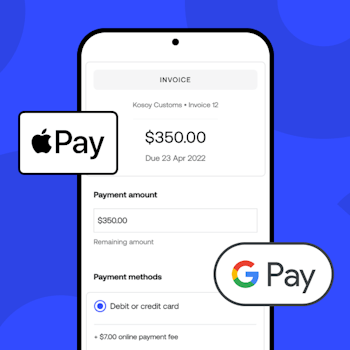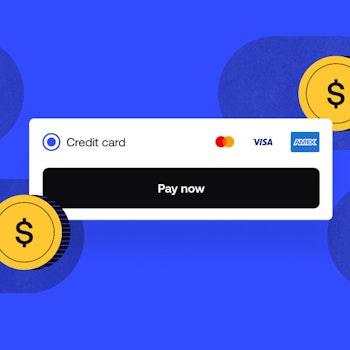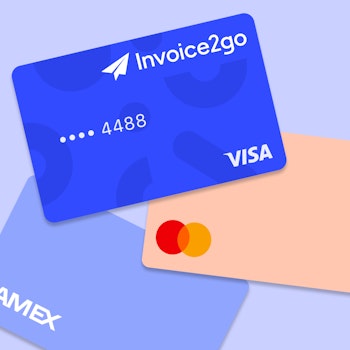
How to grow your self-employed business with LinkedIn – Part 2
Welcome to part 2 of our LinkedIn masterclass for self-employed professionals. We’re excited to take you deeper into strategies to help support your business now more than ever.
If you haven’t checked out the first part of this series yet, be sure to take a look so you don’t miss any foundational steps.
However, if you’re ready for more advanced tips, here’s some information to keep you motivated: 79% of small business owners say they generate leads through the platform. Those most successful say they consistently share relevant content, develop trust with their followers, and spend several hours per week on the site.
The next tips in this straightforward guide will show you how to use advanced LinkedIn features and position yourself for the most success. We’ll show you how to set up a strategy, share eye-catching content, do different types of paid ads, and more. We commend you on your work so far and can’t wait to take you further. Let’s dive in:
1. Set specific goals and track your progress
First, it’s useful to set aside time in your schedule to work on marketing and social media. We know you’re busy, and chances are if you don’t intentionally set aside time, consistency will be difficult.
5 hours per week for social media marketing is a great place to start. However, if you’re squeezed for time, even one solid hour devoted to improving your online presence can help. Remember, slow progress is better than no progress. Grab your calendar and put aside some time to be at the computer.
OK – now that you’ve set time for LinkedIn and social media, it’s time to set goals. Great marketing strategies all have one thing in common: clear objectives.
You’ll never know if you’re making progress unless you consciously plan and write down what you want to achieve. Also, your time is valuable. You want to know your efforts are producing results for your company.
Here are 3 common social media goals and how you can check your progress for each:
- Build awareness: Get more people to know about your company, and find your business more easily online. Monitor your progress by tracking the number of followers and shares you receive. See if your company comes up higher in search engine results after several months.
- Boost business: Get more jobs. Track your website clicks, email sign-ups, phone calls, and total sales.
- Get more positive online reviews: Have more people raving about your excellent work and service. Track how many comments, likes, and mentions your company gets.
SMART goals are a useful framework for setting intentions and accomplishing more. They can motivate you and help you more easily understand if you’re meeting your targets. We recommend that you try them out.
Here’s an overview of how they work. Each goal should be:
- Specific: If it’s too general, it’s difficult to know if you’ve achieved it. Something detailed like, “I want to increase the reach of the business LinkedIn page to 250 likes by August 31 through ads, events, and video” will set you up for the best results.
- Measurable: Make it easy to measure your progress. For example, saying, “I want to increase business” is an OK place to start. Still, “I want to boost business 10% in the next three months,” provides a clearer picture. You can then review your invoices to accurately assess if you’ve met your goal.
- Attainable: This can sometimes be a tricky balance. We encourage you to go big, but it’s also essential to have goals you can achieve. For example, Increasing sales by 500% in one month may just not be realistic. The best goals push you from your comfort zone but are also attainable.
- Relevant: Your social media goals need to be aligned with your higher business goals. For example, if you want to increase your following on LinkedIn, plan how that connects with getting more calls for jobs.
- Time-bound: This is crucial. Include a specific date for when you want to achieve your goal. We recommend 90-day increments since that’s usually enough time to see progress. A month can be too short, and a year can seem too far off.
Take some time to write down a SMART goal for LinkedIn and social media. Place it where you’ll be able to see it regularly. Don’t worry if it’s perfect, you can always make adjustments later. When you get more experienced at setting, tracking, and reviewing goals, this process becomes second nature.
2. Create a content strategy and schedule
If you use social media in your personal life, chances are that you post whenever you feel like it. However, when it comes to your business, you need a strategy. Intentionally posting content at specific times dramatically impacts your engagement.
Social media experts often discuss how often you should post online. Many recommend posting high-quality content – including photos, videos, and articles – between 2-5 times per week.
If that sounds like a lot of work – don’t worry. Posting 1 excellent piece of content per week is a great place to start. You can always ramp up later when you get more comfortable. Focus on quality over quantity, but posting consistently at least once per week is excellent.
The time you post your content mattersSharing the right post at the right time can have a significant positive impact on your engagement. Consider when your followers are most likely to be online.
For instance, some research shows that Wednesdays and Thursdays are the best days to post on LinkedIn. Morning posts tend to get the most engagement, but after business hours can also do well. Try out different times to test what works best for you.
3. Publish a variety of valuable content
Those who are most successful with social media share a variety of content. Here are some ideas to help you stand out:
Trending topicsIf you come across a blog post or article that you think will benefit your followers, share it. This can show you’re tuned in to your industry and can generate discussions with talented professionals in your network.
Make sure to take some time and write the context of why you’re sharing this information – don’t just copy and paste the link.
Before and after site pics
Visual proof of a job well done is a great way to generate leads and bring positive attention to your page. Provide a compelling description of what did. Most people are unaware of all the intricacies that go into your work – so this content can be especially compelling.
Tips and tricks
Chances are you notice trends with your customers. Think of common customer questions and easy fixes you see while on the job. Then, create a video or share photos answering these questions or explaining how to do an easy fix.
A day in the life. You may think your job is just a job, but you’d be surprised how many people would be interested in learning about a day in your life. This video, for example, got hundreds of thousands of views. Don’t be shy or underestimate how impressive your work can be to others.
Partner postsAs you establish relationships with other businesses in your community, share information from other companies. Shout out to others doing great things in your area. See if you can get others to promote your page as well.
On-site wins
Did you overcome a significant challenge today? Share it with those who follow you online. Just aim to come across as a humble authority – not someone who’s full of themself.
Write your own blogs. Whether you consider yourself a great writer, your company can reap significant rewards by writing blogs. They give you the flexibility to write tailored information for your audience, help you appear in more search results, and can drive more traffic to your website.
If you decide to write your own material, use a tool like Grammarly to check your work. Even the free version of this program goes far beyond average grammar and spelling checkers.
3 best practices for ALL your content:
- Position yourself as a humble authority and avoid hard selling – Don’t push your prospects, attract them to you. Draw customers to you with informative, industry-related material that always shows you in a positive light.
- Always include photos or videos – LinkedIn data shows posts with images get about 2x more likes and comments. Therefore, whatever you share should have an eye-catching image or video.
- Understand LinkedIn’s algorithm – The quality of your content and your engagement determines how many people see what you post. A computer system reviews your content and labels it as high-quality, low-quality, or spam. If people are liking and commenting on your post, more people will see it. You can read more about LinkedIn’s algorithm here.
Check out some useful social media scheduling toolsIf you feel like you’ve got too much on your plate and want to reduce the amount of time you spend on social media, there are tools to help you. Hootsuite, CoSchedule, or Sprout Social are 3 popular sites that let you batch upload posts, then tell the application when you’d like them to go live.
This means you could upload your posts for the week or month, then get back to work without having to think about what you’re going to share online.
Keep in mind: These three services come with a monthly cost. If you’re just starting with LinkedIn, it’s probably best just to make a reminder in your calendar to post at least 1 excellent piece of content each week.
4. Participate in discussions and join groups
Beyond publishing content, you want to take the time to interact and engage with other users. Be sure to respond to all comments and messages promptly. Take the time to read and respond to posts of others in your feed each week.
You’ll also want to take advantage of LinkedIn Groups. These small communities allow professionals with similar interests to share content, make new contacts, and establish themselves as experts. They’re great for making new connections outside your network.
To find Groups, just use the search feature on your LinkedIn homepage or check out Groups discover. If you belong to an association, check if it has a Group. This can be a useful source for networking or even professional development.
You can also create a new Group for people who serve homeowners in your community and feature it on your company page.
To add a group to your company’s page, follow these steps:
- Click Me at the top of your profile and choose your company page from the Manage section.
- Choose Overview from the top menu and find Featured groups.
- Type in your group and select it once it pops up. You can include three featured groups on your company’s page.
Keep in mind: Just because you build a company page doesn’t mean that followers will come. Building a community takes work. Promote your community on your company page, and update it regularly.
5. Make showcase pages to highlight specific services
Your company page provides an overview of your business and its values. Showcase pages zoom in and highlight specific services your company offers.
You can feature these pages on your main company page, and they have their own customizable news feeds. They’re often underused by small businesses, so this is a chance to stand out, come up in more searches, and highlight your best work.
You can create up to 10 showcase pages, but 1 is a great place to start. Users can search for and follow any of your showcase pages based on their interests.
Here’s how to set up a showcase page:
- Click Me at the top of your LinkedIn page.
- Select your company page from the Manage section.
- At the top right, click admin tools, then Create a Showcase Page.
Important note: Update your showcase pages regularly. Over time they can develop followers that are not on your main company page. Like most prominent companies, your showcase page will likely have fewer followers than your main page. Don’t worry if your numbers are small – especially in the beginning.
Showcase Pages can also help you when it comes to creating paid advertisements (more explanation on this in the next section).
6. Create LinkedIn ads
Everything we’ve discussed so far has been free to use. However, LinkedIn also lets your company promote its services through targeted ads.
Because LinkedIn users proved specific details about their backgrounds and skills, you’re able to make highly-targeted ads for your company. Also, while there is a cost for this service, it’s cheaper than putting an ad in the newspaper – and will likely connect you with more prospects.
The LinkedIn Campaign Manager is the feature that lets you create ads, track your performance, and get demographics reporting.
Here are the main types of ads you can run:
- Sponsored content: Boost the content you post and get it in front of a broader audience.
- Text Ads: Publish ads directly selling your services on the LinkedIn home page, profile pages, group pages, showcase pages, and more.
- Sponsored InMail: These function similarly to email marketing. Send personalized ads directly to specific users. These messages are delivered when users are active on the site, so you’re likely to have a better response. Improve your chances of standing out with a straightforward subject line, a concise, personalized message, and a call to action.
Beyond these options, LinkedIn also gives you opportunities to buy ads through their partner program. These options are more expensive, but you work with experts to meet your marketing goals.
7. Track and analyze your stats
Whether you’re posting regular content or running a paid ad campaign, it’s crucial to check your analytics. LinkedIn gives you detailed information to help you learn what kind of content your followers engage with most. This is a valuable opportunity to better understand your following and to improve how you communicate with them.
Here’s How to access your analytics for your business page:
- Click Me at the top of your page.
- Select your company page under the Manage section.
- You’re able to see specific analytics for your visitors, updates, and followers. Click the Analytics tab to choose between the 3.
Congratulations! You now know more than most about marketing your self-employed business with LinkedIn. You have the tools to create an excellent strategy, share outstanding content, and network with other professionals to help you win more business.
Remember, all of this takes consistent effort, and some trial and error is inevitable. Still, over time consistent effort will reward you with a competitive edge in your community.
We hope you enjoyed this masterclass. If you’re looking to connect with other professionals like you in the US, join our Facebook community group to learn and share more tips and strategies. We hope to see you there.
Related Articles

How to accept credit card payments on Invoice2go in 3 simple steps

Accept payments online via Apple Pay and Google Pay

Must-not-miss write-offs as you wrap up 2022 year-end finances

5 ways accepting credit and debit card payments helps your business stay resilient

4 easy ways to increase cash flow today

What is Small Business Saturday and why is it important?
The features and surprising benefits of a well-designed packing slip
